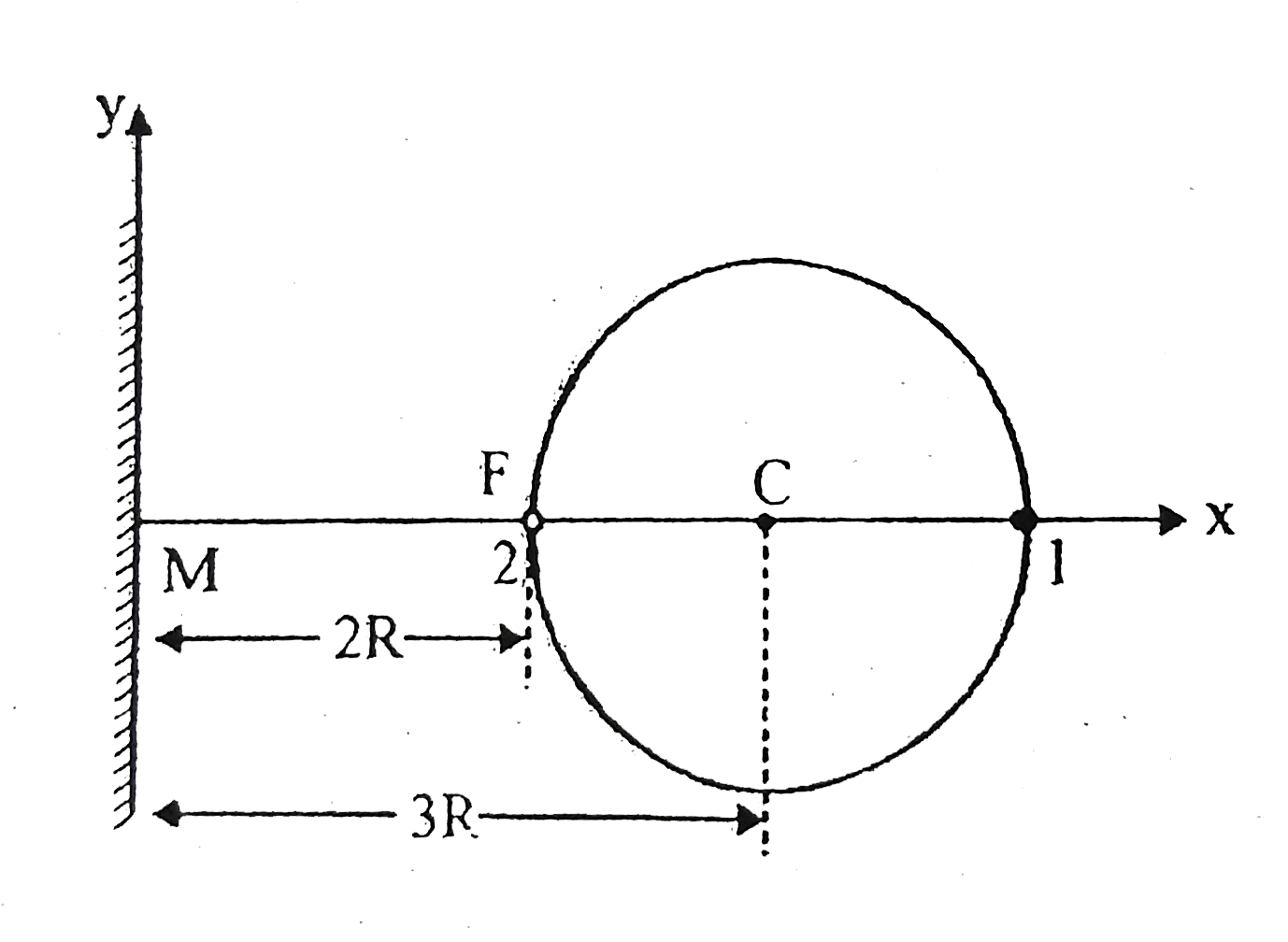A point light soure is in the centre of a spherical layer of a substance, with an internal raiousr1 and an exter- nal radius r2. The refractive index and the absorption coef- ficient of the substance are known. Find the transmittance of the layer of substance. Neglect secondary reflec- tions.
The correct Answer is:k=II0=r21r22−16n2(n+1)4e−μ(rs−rs)
The tranmittance of a material layer is the ratio of the intensity of a beam of light passing throught the layer to the intensity  of the beam entering the layer , k=I/I0 Substituting the appropriate data we obtain the result sought.
of the beam entering the layer , k=I/I0 Substituting the appropriate data we obtain the result sought.
Similar Questions
A point source of monochromatic light emitting a lumninous flux Φ is positioned at the cnetre of a spherical layer of substance. The inside radius of the layer is a, the outside one is b. The coefficient of linear absorption of the substance is equal to x, the reflection coefficient of the surfcaes is equal to ρ. Neglecting the secondary reflections, find the intensity of light taht passes through that layer.
View SolutionA beam of monichromatic light falls normally on the surfcae of a plane-parallel plate of thickness l. The absorption coefficient of the substance the plate is made of varies linearly along the normal to its surfcae from x1 to x2. The coefficient of reflection at each surface of the plate is equal to ρ. Neglecting the secondary reflections, find the transmission coefficient of such a plate.
View Solution
Knowledge Check
- Question 1 - Select One
There is a spherical glass ball of refractive index μ1 and another glass ball of refractive index μ2 inside as shown in figure . The radius of the outer ball is R1 and that of inner ball is R2. A ray is incident on outer surface of the ball at an angle i1,
_S01_066_Q01.png)
Find the value of r2Asin−1(R1μ2R2sini1)Bsin−1(R2μ2R1sini1)Csin−1(R1μ1R21sini1)Dsin−1(R2μ1R1sini1)
Draw a ray diagram to show the formation of the real image of a point object due to a convex spherical refracting surface, when the ray of light is travelling from a rarer medium of refractive index nx to a denser medium of refractive index n2 .
Using this diagram derive the relation between object distance (w), image distance (v), radius of curvature (R) of a convex spherical surface. State the sign convention and the assumptions used.View SolutionFind the radius vector defining the position of a point source of spherical waves if that source is known to be located on the straight line between the points with radius vector r1 and r2 at which the oscillation amplitudes of particls of the medium are equal to a1 and a2. The damping of the wave is negligible, the medium is homogeneous.
View SolutionA parallel beam of light falls on the surface of a convex lens whose radius of curvature of both sides of 20cm. The refractive index of the material of the lens varies as μ=1.5+0.5r , where r is the distance of the point on the aperture from the optical centre in cm. Find the length of the region on the axis of the lens where the light will appear. The radius of aperture of the lens is 1cm.
View SolutionA parallel beam of light falls on the surface of a convex lens whose radius of curvature of both sides of 20cm. The refractive index of the material of the lens varies as μ=1.5+0.5r , where r is the distance of the point on the aperture from the optical centre in cm. Find the length of the region on the axis of the lens where the light will appear. The radius of aperture of the lens is 1cm.
View SolutionA spherical fish bowl of radius R is placed in front of a plane vertical mirror (M) The thickness of the wall of the fish bowl is very thin The centre (C) of the spherical bowl is at distance of 3R from the plane mirror. The bowl is filled with water and contains a fish (F) Fish(F) is at a distance of R from the centre of the spherical bowl as shown in the figure Refractive index of water is 4/3 two surfaces are indicated in the bowl as first surface (1) and second surface(2)

Column-IColumn-IIOptical Event–––––––––––––––Nature of image––––––––––––––––––(A)Refraction at first surface(P)Virtual(B)Refraction at second surface after reflection from mirror(Q)Real(C)Refraction at first surface after reflectionfrom mirror and refraction from second surface(R)Magnified(S)DiminishedView SolutionThere is a spherical glass ball of refractive index μ1 and another glass ball of refractive index μ2 inside as shown in figure . The radius of the outer ball is R1 and that of inner ball is R2. A ray is incident on outer surface of the ball at an angle i1,
_S01_066_Q01.png)
Find the value of r2View SolutionThere is a spherical glass ball of refractive index μ1 and another glass ball of refractive index μ2 inside as shown in figure . The radius of the outer ball is R1 and that of inner ball is R2. A ray is incident on outer surface of the ball at an angle i1,
_S01_064_Q01.png)
Find the value of r1View Solution

